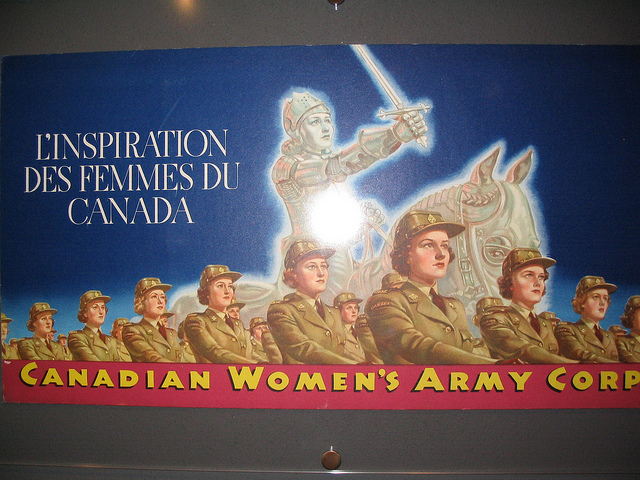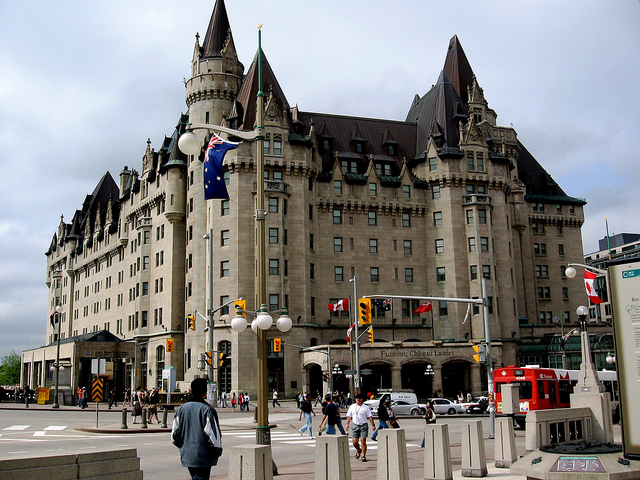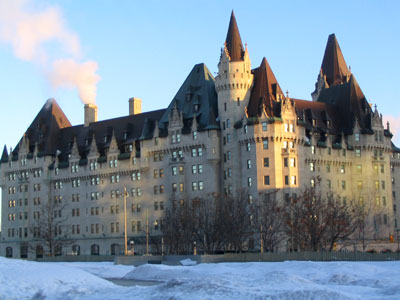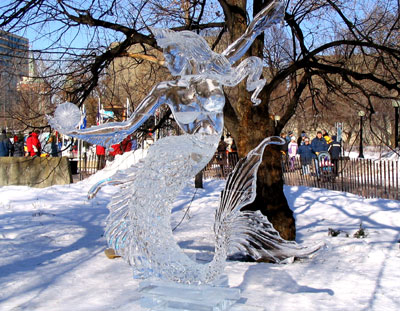One of the exhibits also explains the origin of the notion of modern peacekeeping, brought to life in 1956 by Canadian Prime Minister Lester B. Pearson, who received a Nobel Peace Prize for his contributions in 1957.
To me one of the most amazing exhibits in this area is a controversial painting depicting a Canadian soldier abusing and killing a civilian victim during a peacekeeping mission in Somalia. My guide indicated that many people in the Canadian military did not appreciate that this painting was being displayed, and in many countries this kind of unflattering depiction of a member of a national army would have been censored. It truly speaks to Canada’s openness and honesty that this picture was included in the exhibition as a testament to the devastating and dehumanizing effects of war.
Regeneration Hall:
This section was not part of the original concept of the building, it was added by the architect himself. Through a narrow window one can see the Peace Tower, and any slight change in position will make this view disappear. This is a symbolic metaphor for how difficult peace is to achieve and how easily we lose sight of it. Plaster statues in Regeneration Hall were created by the same artist who created the Vimy Memorial. The eerie sound in this portion of the building is the recording of the wind that used to come through the steel girders before the roof was put on. A tour of war veterans came through Regeneration Hall, heard this strange sound of the wind and they were very moved by it. The museum officials decided to record the sound and run it continuously.

Regeneration Hall
The Royal Canadian Legion Hall of Honour
This centrally located section of the Museum contains artifacts, works of art, and other traditional display media to honour and remember Canadian history.
The LeBreton Gallery
One of the world’s best collections of military vehicles and artillery are exhibited in the LeBreton Gallery. Furthermore, it features an important collection of uniforms, medals and other artifacts.

LeBreton Gallery
Special exhibitions in the Lieutenant-Colonel John McCrae Gallery
In addition to these permanent exhibitions and commemorative places, the Canadian War Museum houses special exhibitions. One of the main reasons I went to visit this museum was to see an exhibition called Weapons of Mass Dissemination: The Propaganda of War.
The psychological aspects of warfare, and in particular the tools and techniques of propanda to mobilize and incite the general population to participate in war have always fascinated me. I could have spent hours in this part of the Museum alone, and this collection has been one of the most fascinating exhibitions I have visited in my entire lifetime.

The term “propaganda” itself is defined as the “organized dissemination of information to influence thouths, beliefs, feelings and actions”.
The exhibition was originally developed by the Wolfsonian-Florida International University and highlights visual propaganda tools used in the United States, Canada, Mexico, Germany, France, Italy, Spain and Holland. Propaganda posters date back to the First and Second World Wars, as well as the Spanish Civil War.
Numerous colourful posters from different countries illustrate the powerful impact of war-time propaganda and its powerful impact on the masses. Emotional headlines, bright colours and strong symbolism evoke powerful feelings fear, anger, pride and patriotism.

Here are a few examples of how nations engaged in war use propaganda posters:
– to exhort men, and even women and members of different ethnic groups to join the army [“There is still a space for you in the Waffen SS”]
– to promote the purchase of war bonds [“I buy bonds and I build bombs”]
– to increase production and output of military equipment
– to reduce the civilian onsumption of tobacco products so soldiers can enjoy smoking
– to plant seeds and vegetables to create oil for the hungering masses
– to portray the enemy in the most negative way, using unflattering and threatening images
– to warn the population of “careless talk” implying that foreign spies could pick up important information and use it against the nation
– to instruct soldiers and the population in the use of protective equipment such as gas masks
In addition to the posters from the Wolfsonian – Florida International University, the Canadian War Museum has added a Canadian component to add to this exhibition. The development of propaganda in Canada is featured in the form of posters from the Museum’s collections, footage from the National Film Board, as well as special hands-on programming. Screenings of NFB propaganda films, creative workshops and a popular speaker series round out the programming on the topic of mass media and propaganda.

My two hours at the Canadian War Museum definitely weren’t enough, I was just able to get a cursory glance at the permanent exhibitions and this most fascinating special exhibition on wartime propaganda. It is one of the most impactful museums I have ever visited, and the combination of the layout and design with the artifacts on display have given me an excellent overview of Canada’s role in local and international conflicts.




